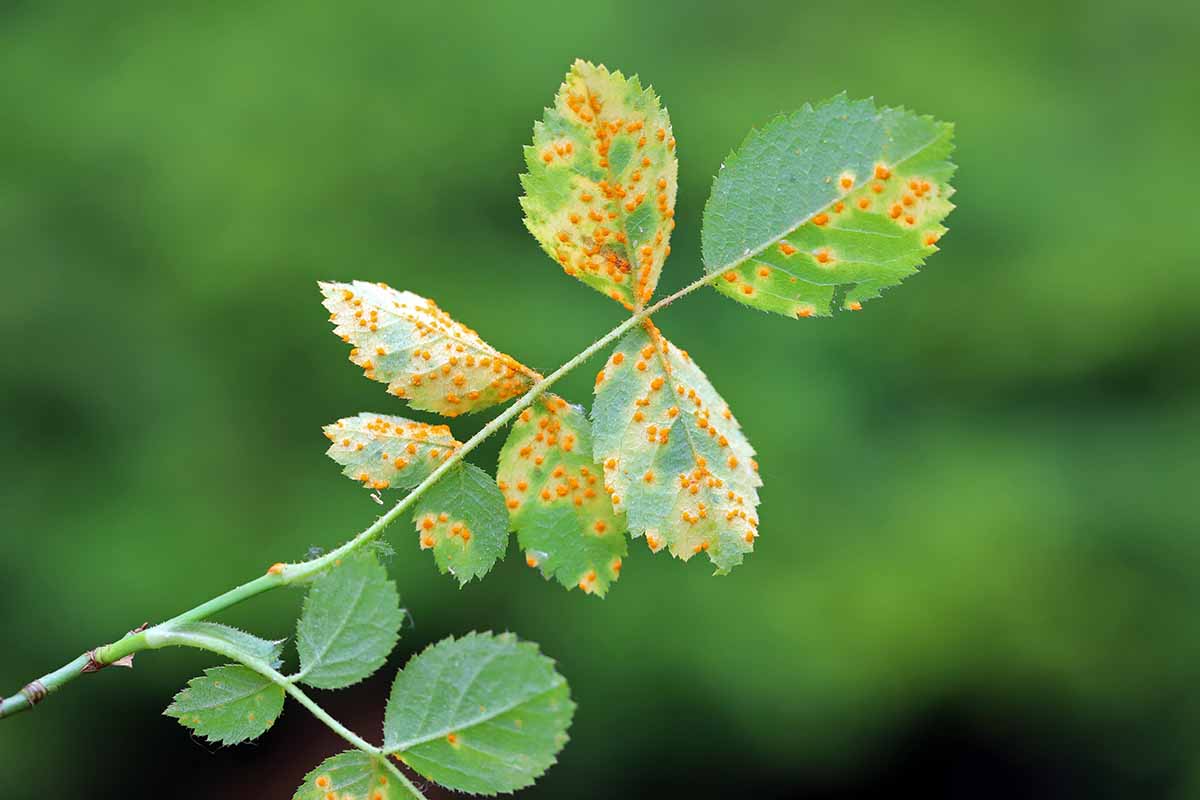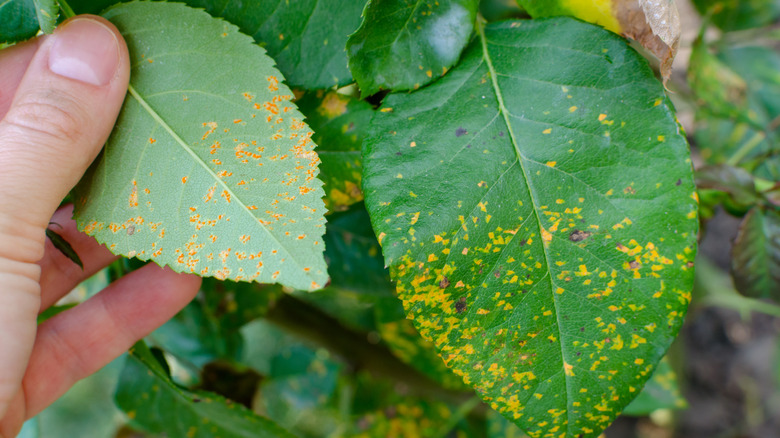Rust on Roses: Understanding the Problem
Roses are one of the most popular and iconic flowers in the world, but they can be susceptible to various diseases, including rust. Rust on roses is a common issue that can cause significant damage to the plant if left untreated. It is essential to understand the problem of rust on roses to effectively treat and prevent it. Rust is a fungal disease that affects the leaves and stems of roses, causing yellowing, black spots, and powdery residue. The fungus responsible for rust on roses, Phragmidium mucronatum, thrives in humid and warm environments, making it a prevalent issue in many regions. If you’re wondering how to treat rust on roses, it’s crucial to first understand the causes of the disease. Overwatering, poor air circulation, and high humidity can all contribute to the development of rust on roses. By recognizing the signs of rust and understanding its causes, you can take proactive steps to prevent the disease from spreading and damaging your roses.
Identifying Rust Infection: Early Warning Signs
Early detection is crucial in treating rust on roses effectively. Rust infection can manifest in various ways, and recognizing the early signs is essential to prevent the disease from spreading. One of the most common early warning signs of rust infection is yellowing leaves. As the disease progresses, the leaves may turn a bright yellow or orange color before eventually falling off. Another sign of rust infection is the appearance of black spots or powdery residue on the leaves or stems. These spots can be small and circular or large and irregularly shaped, depending on the severity of the infection. In some cases, rust infection can also cause the leaves to become distorted or twisted. By monitoring your roses regularly for these early warning signs, you can take prompt action to treat the infection and prevent it from spreading. Remember, the key to successful treatment is early detection, so it’s essential to know how to treat rust on roses as soon as possible.
How to Treat Rust on Roses: Organic and Chemical Methods
When it comes to treating rust on roses, there are several methods to consider. The most effective approach often involves a combination of organic and chemical treatments. Organic methods, such as neem oil and bicarbonate solutions, can be a gentle and environmentally friendly way to combat rust. Neem oil, in particular, has been shown to be effective in controlling fungal diseases like rust. Bicarbonate solutions, on the other hand, can help to neutralize the pH of the plant’s surface, making it less hospitable to fungal growth. Chemical fungicides, such as copper-based products, can also be effective in treating rust on roses. However, it’s essential to use these products with caution and follow the instructions carefully to avoid damaging the plant. When deciding how to treat rust on roses, it’s crucial to consider the severity of the infection and the type of rose plant affected. By choosing the right treatment method, you can effectively eliminate rust and restore your roses to their former glory.
Preventing Rust from Spreading: Sanitation and Hygiene
Preventing the spread of rust on roses is crucial to effective treatment and long-term plant health. One of the most critical steps in preventing the spread of rust is to maintain proper sanitation and hygiene practices. This includes disinfecting pruning tools and other equipment regularly to prevent the transfer of fungal spores from infected plants to healthy ones. Remove any infected leaves or stems from the plant, and dispose of them properly to prevent the fungus from spreading. It’s also essential to clean up any debris or fallen leaves from around the base of the plant, as these can harbor fungal spores. By following these simple sanitation and hygiene practices, you can significantly reduce the risk of rust spreading to other parts of the plant or to nearby plants. Remember, knowing how to treat rust on roses is only half the battle – preventing its spread is equally important. By combining effective treatment methods with good sanitation and hygiene practices, you can keep your roses healthy and thriving.
Natural Remedies for Rust on Roses: Do They Really Work?
When it comes to treating rust on roses, many gardeners turn to natural remedies as a safer and more environmentally friendly alternative to chemical fungicides. But do these remedies really work? Garlic sprays, cinnamon powders, and baking soda solutions are just a few examples of natural remedies that have been touted as effective treatments for rust on roses. While some of these remedies may have some antifungal properties, their effectiveness in treating rust on roses is largely anecdotal and has not been scientifically proven. For example, garlic sprays may help to repel fungal spores, but they may not be effective in treating established rust infections. Cinnamon powders, on the other hand, may have some antifungal properties, but they can also be toxic to plants in high concentrations. Baking soda solutions, meanwhile, may help to raise the pH of the plant’s surface, making it less hospitable to fungal growth, but they may not be effective in treating severe rust infections. While natural remedies may have some benefits, they should not be relied upon as the sole means of treating rust on roses. A comprehensive approach that includes a combination of organic and chemical treatments, as well as good sanitation and hygiene practices, is often the most effective way to treat rust on roses and prevent its spread. By understanding how to treat rust on roses using a variety of methods, gardeners can take a proactive approach to maintaining healthy and thriving rose plants.
Systemic Fungicides: A Last Resort for Severe Rust Infections
In severe cases of rust infection, where the fungus has spread extensively throughout the plant, systemic fungicides may be necessary to treat the disease. These fungicides are absorbed by the plant and distributed throughout its tissues, providing a more comprehensive treatment than topical applications. However, systemic fungicides should be used with caution and only as a last resort, as they can have negative impacts on the environment and human health. They can also contribute to the development of fungicide-resistant fungal strains, making them less effective over time. Additionally, systemic fungicides may have side effects on the plant itself, such as reduced growth or increased susceptibility to other diseases. When using systemic fungicides, it’s essential to follow the instructions carefully and take necessary precautions to minimize their risks. It’s also crucial to combine their use with good sanitation and hygiene practices, as well as organic and chemical treatment methods, to ensure the most effective treatment of rust on roses. By understanding how to treat rust on roses using a combination of methods, gardeners can take a comprehensive approach to reviving their roses and preventing the spread of this debilitating disease.
Maintaining Healthy Roses: Long-Term Rust Prevention Strategies
To prevent rust from becoming a recurring problem, it’s essential to adopt long-term strategies that promote healthy rose growth and reduce the risk of infection. One of the most critical factors in preventing rust is soil care. Roses growing in well-draining, fertile soil with a pH between 6.0 and 6.5 are less likely to develop rust. Regular watering is also crucial, as roses that are water-stressed are more susceptible to disease. However, it’s essential to avoid overwatering, which can exacerbate rust infections. Fertilization also plays a key role in maintaining healthy roses. A balanced fertilizer that provides essential nutrients can help promote strong, healthy growth and reduce the risk of rust. Additionally, providing adequate air circulation around the plants can help prevent moisture from accumulating on the leaves, reducing the risk of rust infection. By adopting these long-term strategies, gardeners can reduce the risk of rust and create a healthy, thriving environment for their roses. By understanding how to treat rust on roses and implementing these prevention strategies, gardeners can enjoy beautiful, rust-free roses for years to come.
Conclusion: Winning the Battle Against Rust on Roses
In conclusion, rust on roses is a common problem that can be effectively treated and prevented with the right strategies. By understanding the causes of rust, identifying early warning signs, and implementing a combination of organic and chemical treatment methods, gardeners can revive their roses and prevent the spread of this debilitating disease. Additionally, adopting long-term rust prevention strategies, such as proper soil care, watering, and fertilization, can help create a healthy environment for roses to thrive. Remember, how to treat rust on roses is not a one-size-fits-all approach, and it’s essential to tailor treatment methods to the severity of the infection and the specific needs of the plant. By taking proactive steps to treat and prevent rust, gardeners can enjoy beautiful, healthy roses for years to come. With the right knowledge and strategies, winning the battle against rust on roses is within reach.





